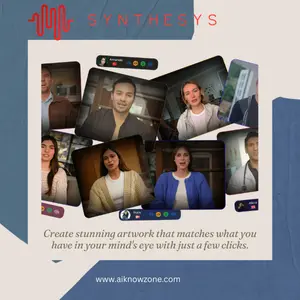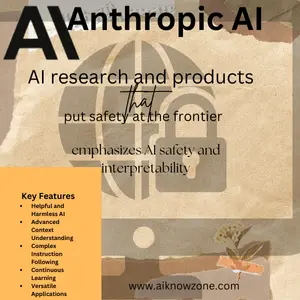Copernic
Dive into our review of Copernic AI, the tool transforming 2D images into immersive 3D experiences. Is it the right AI tool for you? Find out!
Description
Copernic AI: Creating Immersive AI-Generated Worlds ✨
Alright, let’s talk about Copernic AI! In a world bursting with AI tools, Copernic stands out by specializing in creating environments, specifically 2+1D and 3D worlds. Imagine turning panoramic images and videos into something that feels almost real. That’s what Copernic aims to do. It’s like giving your photos a whole new dimension, literally! This tool focuses on generative AI, which means it’s designed to create something from scratch. Think of it as an artist who uses algorithms instead of brushes. The real magic lies in its ability to take existing 2D imagery and infuse it with depth, creating what they call a 2+1D bubble world. It’s not full-blown 3D, but it’s a significant step up from a flat image, offering a more immersive and engaging visual experience. In essence, Copernic is trying to bridge the gap between static images and fully realized 3D environments using AI, making it an exciting tool for creatives and developers alike.
The buzz around Copernic is pretty exciting, especially if you’re into AI and creative tech. From what I’ve gathered, Copernic isn’t just about spitting out generic AI-generated content. It’s about taking your existing visuals and giving them a serious upgrade. The promise of turning simple panoramic shots into something more interactive and immersive is genuinely appealing. I envision this being incredibly useful for creating engaging content for virtual reality, interactive experiences, or even just jazzing up your website with more dynamic visuals. While it’s still in its early stages, the potential applications are vast. Imagine virtual tours that feel more real, or interactive storytelling that pulls you right into the scene. The possibilities are pretty endless, and that’s what makes Copernic such an interesting tool to watch. Plus, with the promise of full 3D worlds on the horizon, it feels like this is just the beginning of what Copernic can achieve.
Key Features and Benefits of Copernic
- 2+1D Environment Generation: Creates bubble worlds from 2D images with added depth, offering a more immersive experience. Think panoramic views brought to life!
- Generative AI: Leverages AI to generate high-quality imagery and text, perfect for content creation.
- 360° Panorama Creation: Transforms images and videos into AI-generated 360 panoramas, which are ideal for VR experiences and interactive content.
- API Access: Offers an API for developers who want to integrate Copernic’s capabilities into their own projects.
How It Works (Simplified)
Using Copernic seems pretty straightforward. Basically, you upload a 360° image or video, and the AI works its magic to add depth and create a 2+1D environment. If you’re a developer, there’s an API you can use to automate the process. The tool then allows you to turn your generated image into a 2+1D bubble world. It’s currently in early pre-alpha but Copernic360 is available. Sign up to get access instructions! From what I could find, that should do it.
Real-World Use Cases for Copernic
- Virtual Tours: Imagine a real estate company using Copernic to create immersive virtual tours of properties. Potential buyers could explore a house from their computer or VR headset, getting a real feel for the space before even setting foot inside.
- Interactive Storytelling: A game developer could use Copernic to create dynamic, explorable environments for their games. Players could wander through AI-generated landscapes that react to their actions, enhancing the sense of immersion.
- Enhanced E-commerce: Online retailers could showcase their products in interactive 360° environments, allowing customers to view items from all angles and zoom in on details, leading to a more informed purchasing decision.
Pros of Copernic
- Generates immersive 2+1D environments.
- User-friendly interface.
- Offers API access for developers.
- Potential for VR and interactive content creation.
Cons of using Copernic
- Currently in pre-alpha, so may have bugs or limitations.
- Limited to low-resolution tasks.
- Requires a 360° image or video as input.
Copernic Pricing
Pricing information is a little scarce, possibly because the tool is still in its early stages. I’d recommend checking their website (copernicai.com) for the most up-to-date details or contacting them directly.
Conclusion
In conclusion, Copernic is an interesting AI tool with a focus on generative AI and creating 2+1D environments. While it’s still early days, the potential for creating immersive experiences is definitely there. If you’re a developer, content creator, or VR enthusiast, Copernic is worth keeping an eye on. It seems to be best-suited for those looking to add depth and interactivity to their visual content, offering a glimpse into the future of AI-generated worlds. Give it a try and create something amazing!






Reviews
There are no reviews yet.